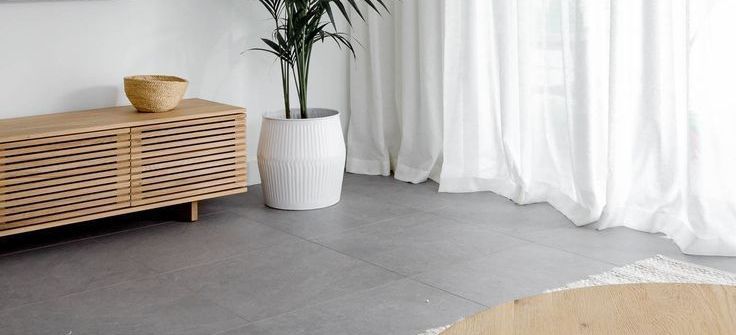How to Improve Indoor Air Quality
Kyl Roelofs • April 7, 2024
Indoor Air Quality: Top Home Improvements

We’ve all heard it before: "Fresh air is good for you!" And no, your well-meaning aunt isn’t just talking about that first breath of spring air when you open your windows in the morning. In fact, the air inside your home can be up to five times more polluted than the air outside. Yup, you heard that right. The air in your home might actually be worse than the air in that bustling city you’re trying to escape every weekend. No judgment—just a little home improvement wake-up call. You can absolutely improve the air quality in your home with some simple, smart home upgrades.
1. Get Some Green Going: Plants Are Your New Best Friend
Remember those science classes where they talked about how plants breathe in carbon dioxide and breathe out oxygen? Yeah, it turns out they were right. Plants are nature’s air purifiers, and they can make a huge difference in your indoor air quality.
Why it works: Plants naturally absorb toxins like benzene, formaldehyde, and ammonia (you know, those chemicals that can sneak into your home from things like furniture, cleaning products, and paint). Plus, they release oxygen, which means you’ll be breathing easier and feeling more energized.
Pro Tip: While you can’t exactly expect your houseplants to clean the air like an industrial air purifier, they can make a big difference in smaller spaces. Try adding peace lilies, snake plants, spider plants, or pothos to your home. They’re all low-maintenance and can handle a little neglect (no judgment here, we’ve all forgotten to water a plant or two). If you're going all-in, consider a vertical garden or a green wall for maximum plant power.
2. Upgrade Your HVAC System: It's Time for a Filter Makeover
If you’ve ever been to a friend’s house and wondered why the air feels... musty (and not in a cozy, vintage kind of way), it might be time to check the HVAC system. Your air conditioner or heater can be circulating dust, mold spores, and other allergens if the filters aren’t doing their job.
Why it works: Air filters are the unsung heroes of your home’s air quality. They trap dust, pollen, pet dander, and other particles, keeping your air fresh and your sinuses happy. But like anything, they need regular TLC to work effectively.
Pro Tip: Change your air filters every 3 months or so, and opt for a HEPA filter (High-Efficiency Particulate Air) if you have allergies or asthma. HEPA filters can trap even the tiniest particles—like those pet dander particles, you swear your dog isn’t shedding. Also, consider a UV light filter to kill bacteria and viruses before they get a chance to spread. If you haven’t upgraded your HVAC system in a while, this is one of those improvements
that’ll keep your indoor air quality at its best.
3. Air Purifiers: Your Personal Air Bouncers
Think of an air purifier like your home’s best friend. If you’re really serious about improving indoor air quality, an air purifier can work wonders, especially if you have a lot of dust, smoke, or pet hair floating around.
Why it works: Air purifiers suck in the air, trap harmful particles like allergens and bacteria, and then release purified air back into your home. If you suffer from allergies or live in a city with a lot of pollution, an air purifier can help create a cleaner, healthier environment.
Pro Tip: Not all air purifiers are created equal, so make sure to choose one with a HEPA filter and the right size for your room. For example, if you’re in a smaller bedroom, a compact model will do just fine. For larger living spaces, go big or go home (seriously, bigger purifiers can cover more area). Also, remember to clean or replace the filters regularly—don’t let your purifier get gross.
4. Say Goodbye to VOCs: Choosing Non-Toxic Paint and Materials
If your home has that "freshly painted" smell or a lingering chemical scent from new furniture or cleaning products, you might be dealing with VOCs—volatile organic compounds. These little nasties are released from paints, adhesives, and even carpets. They’re linked to a variety of health issues, from headaches to respiratory problems. Yikes.
Why it works: VOCs are notorious for contaminating indoor air, but luckily, there are alternatives. Choosing low-VOC or zero-VOC paints, sealants, and finishes for furniture can significantly improve your home’s air quality.
Pro Tip: When remodeling, look for products labeled low-VOC or no-VOC—and choose natural materials whenever possible. For example, hardwood flooring
or bamboo are great choices that don’t off-gas harmful chemicals. If you're buying new furniture, look for pieces made from solid wood or sustainable materials instead of composite boards, which often release VOCs.
5. Control Humidity: Mold’s Worst Nightmare
Humidity is like that uninvited guest who shows up to every party. Too much moisture in the air can lead to mold, mildew, and dust mites—things you definitely don’t want in your home.
Why it works: Keeping the humidity levels in check is essential for maintaining healthy air. When humidity is too high, it creates a perfect breeding ground for mold and mildew, which can make your air quality plummet.
Pro Tip: Aim to keep your indoor humidity levels between 30-50%. You can buy a humidifier or dehumidifier to help control moisture. If you live in a particularly humid climate, consider using a dehumidifier in high-moisture areas like basements or bathrooms. Also, keep an eye on places like window seals, corners, and basements for any signs of mold growth. And remember, bathroom fans are your friends—don’t skip them when taking a shower.
Clean Air, Happy Life!
Improving indoor air quality doesn’t have to be complicated or expensive—it just takes a few smart upgrades and a little attention to detail. Whether you’re adding more plants, upgrading your filters, or choosing non-toxic materials, every small change will add up to a fresher home. And remember concrete
is cost-effective, easy to clean, low maintenance, and generally mold resistant surface to enhance and purify your home.
